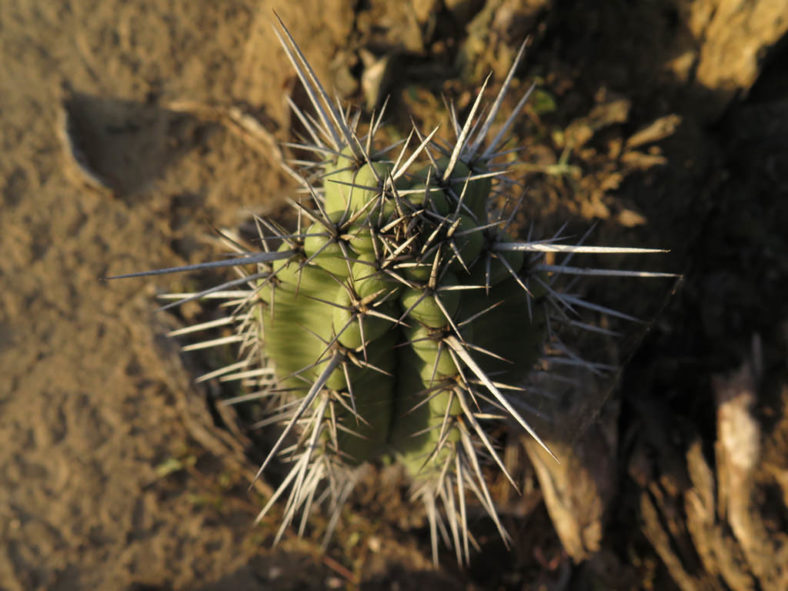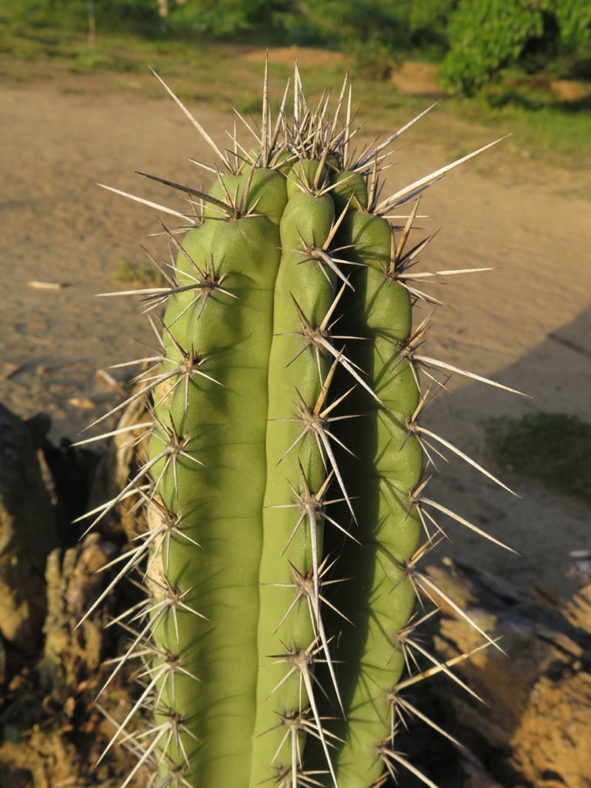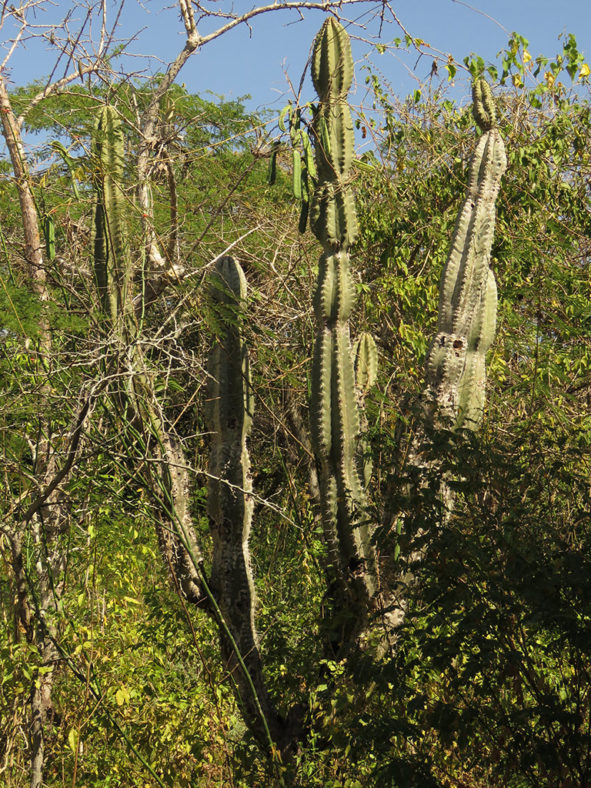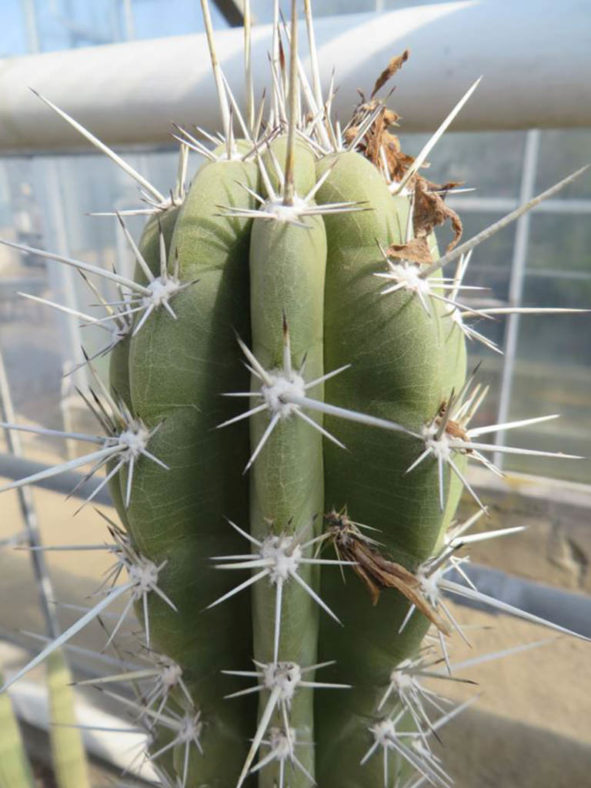Scientific Name
Cereus fricii Backeb.
Synonym(s)
Cephalocereus fricii, Cephalocereus russelianus, Cereus russelianus, Subpilocereus fricii, Subpilocereus russelianus
Scientific Classification
Family: Cactaceae
Subfamily: Cactoideae
Tribe: Cereeae
Genus: Cereus
Etymology
The specific epithet "fricii (FRIK-ee-eye)" honors Alberto Vojtěch Frič (1882-1944), a famous Czech botanist, ethnographer, writer, and explorer who discovered and described many species of cacti.
Origin
Cereus fricii is native to the Guajira desert in northern Venezuela and Colombia.
Description
Cereus fricii is a large, tree-like cactus with a candelabra-like crown of thick, ridged branches that bear clusters of long spines. It can grow up to 26.2 feet (8 m) tall, while the trunk can reach up to 6.6 feet (2 m) in height and 20 inches (50 cm) in diameter. The branches are dark green and have 4 to 6 notched ribs lined with large areoles covered with white wool. Each areole bears three central and seven radial spines. The spines start brown and change to gray over time.
The flowers are cream-colored and can reach up to 3.6 inches (9 cm) in length. The fruits are pink and can grow up to 2.4 inches (6 cm) long.

How to Grow and Care for Cereus fricii
Light: This cactus likes full sun. It can handle partial shade but thrives in direct sunlight during the summer. A sunny window is a good spot to grow C. fricii indoors. Rotate the pot a quarter turn every week or two to encourage balanced growth. If possible, get your cactus outdoors from spring to fall.
Soil: C. fricii does not like "wet feet" and needs to be grown in well-draining soil. Use commercial soil mixes for cacti or make your own mix.
Hardiness: During the active growth period, this cactus likes warm temperatures, while in winter, it likes cooler temperatures. C. fricii can withstand temperatures as low as 30 to 50 °F (-1.1 to 10 °C), USDA hardiness zones 10a to 11b.
Watering: From spring to fall, water thoroughly, but allow the soil to dry out before watering again. With the arrival of fall, gradually reduce the watering frequency. When C. fricii is dormant in winter, give it just enough water to prevent shrinking.
Fertilizing: During its growing season, this cactus likes regular fertilizing. A balanced, water-soluble fertilizer, diluted to 1/4 strength, can be added to each watering. A 10-10-10 fertilizer is ideal. Instead of making a solution of water and fertilizer, there are also dry fertilizers. Do not fertilize during the winter.
Repotting: While C. fricii is young, it is recommended to repot each year in early spring. Once it matures, repot when your cactus is outgrowing its pot.
Propagation: Using stem cuttings is the easiest method to propagate C. fricii because seed propagation is a slow process. Planting of the cuttings is best done when the cactus is actively growing. Spring and summer are the best time to sow the seeds.
Learn more at How to Grow and Care for Cereus.
Toxicity of Cereus fricii
C. fricii is non-toxic to humans or animals.
Links
- Back to genus Cereus
- Succupedia: Browse succulents by Scientific Name, Common Name, Genus, Family, USDA Hardiness Zone, Origin, or cacti by Genus
Photo Gallery
Click on a photo to see a larger version.


